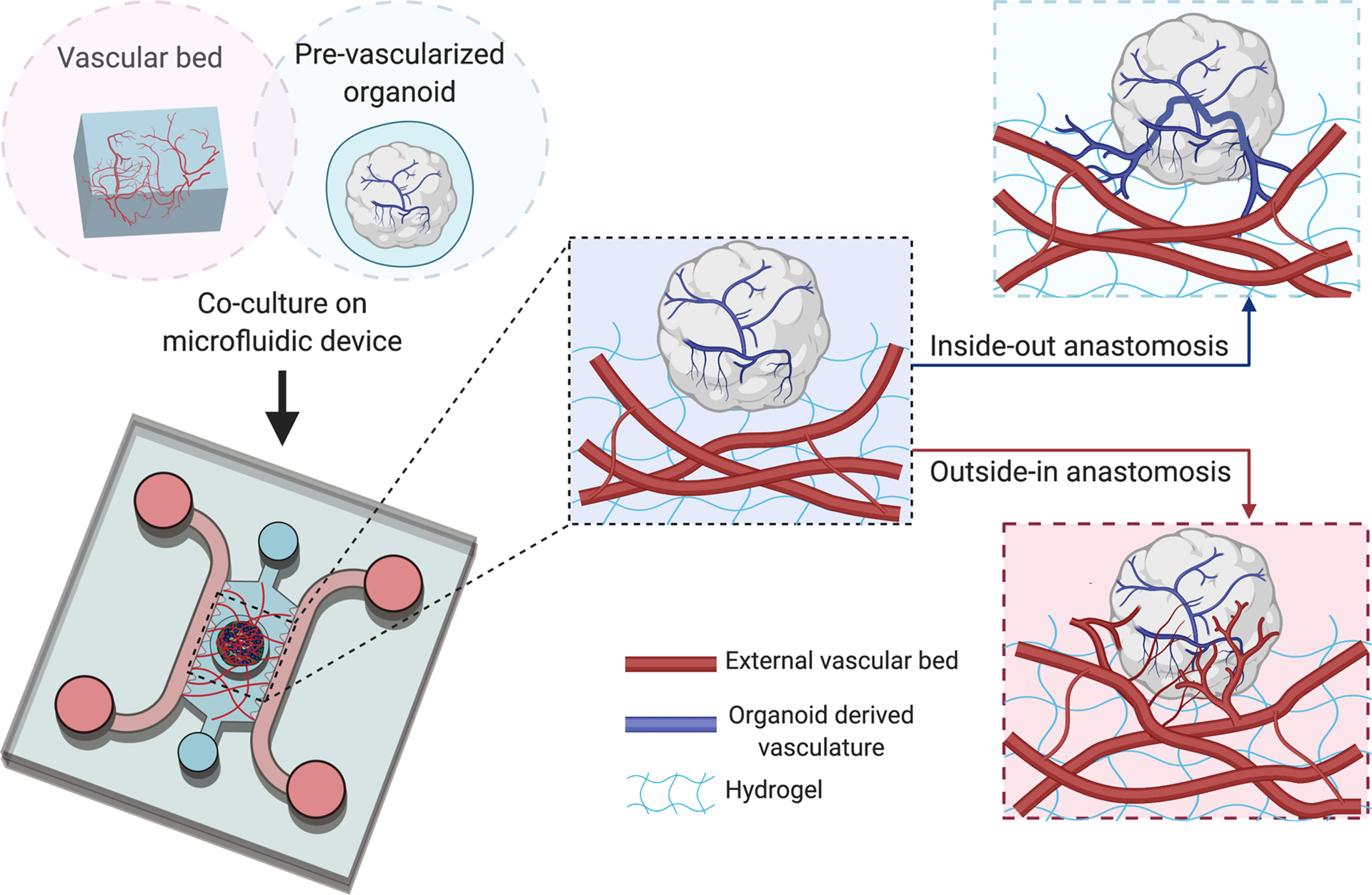Fig 3.

Schematic representation of possible mechanisms to establish anastomoses between in vitro vascular bed and pre-vascularized organoids when co-cultured on a microfluidic chip. Prior to embedding organoid on capillary bed, the organoid contains a self-derived vascular network. Upon embedding, functional connections between vessels in hydrogel (red) and organoid derived vasculature (blue) can be obtained in an ‘inside-out’ or ‘outside-in’ manner. The former depends on expansion and outgrowth of organoid-derived vasculature into surrounding ECM and anastomosis with established MVN in hydrogel. The latter drives by induction of angiogenic sprouts from ECs that comprised the vascular bed to penetrate the organoids and connect with organoid-derived vessels.
